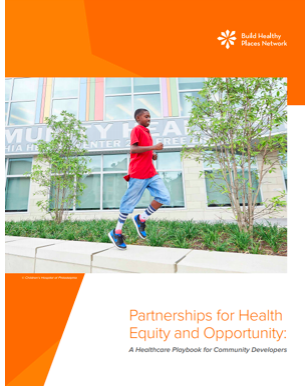"The United States spends nearly $3.5 trillion on medical care each year, with more than 80 percent spent on treating chronic disease — most of which is avoidable and concentrated among those living in low-income communities. Thus, over $1 trillion is spent every year on treating avoidable disease created by conditions of poverty, which can negatively affect the health of future generations.
What if we changed the paradigm from treating to preventing and reinvested that $1 trillion towards eliminating the intergenerational transmission of poor health and poverty? What would it take for prevention to encompass not just diet and exercise, but other dimensions like financial health, stable housing, access to healthy food, education, even community empowerment and agency?
This playbook from PHI's Build Healthy Places Network guides community developers toward partnerships with hospitals and healthcare systems. As stewards for the communities they serve, the community development sector develops and finances the physical spaces, infrastructure, and essential services needed to live a healthy and productive life and can serve as an action arm for advancing population health and health equity."
From Public Health Institute's Build Healthy Places Network comes the report Partnerships for Health Equity and Opportunity: A Healthcare Playbook for Community Developers. This piece can be found on Public Health Institute's Resource Page.
Read More




